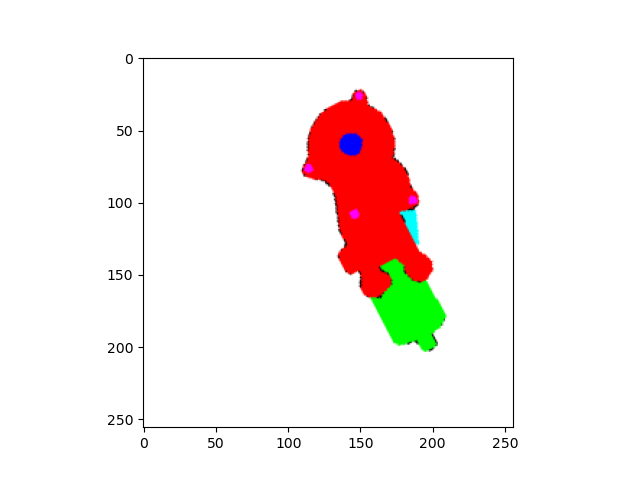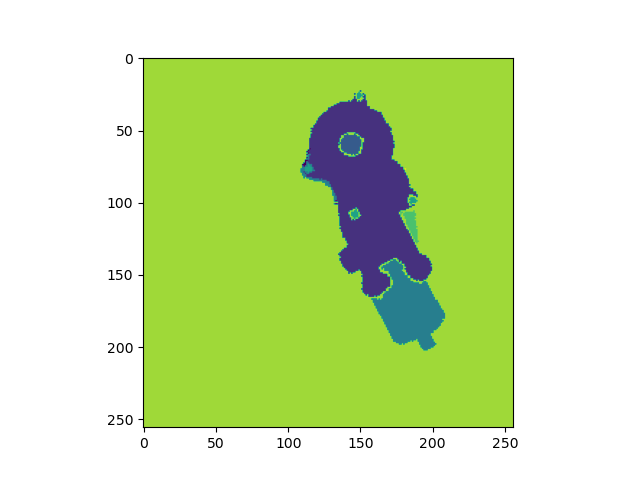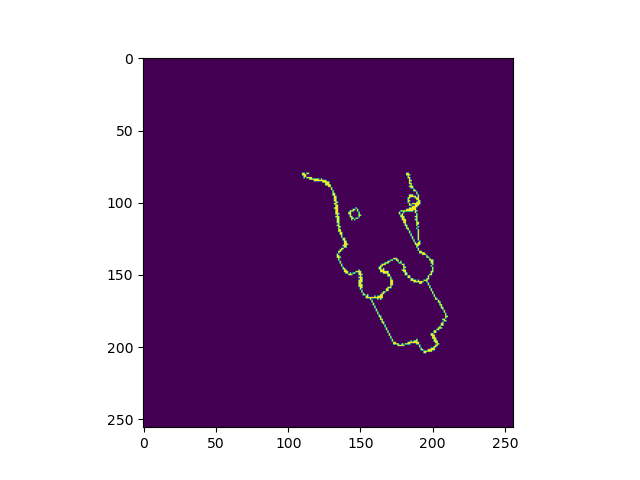I am working on semantic segmentation of electric motors. My masks contain 7 classes (including background) encoded as RGB colors.

I use the following code which is based on this post:
import torch
import numpy as np
import cv2
import matplotlib.pyplot as plt
h=256
w=256
#Loading mask
mask_img = cv2.imread('input/labels/1.png')
mask_img=cv2.cvtColor(mask_img, cv2.COLOR_BGR2RGB)
#Color codes
colors=[(255 ,0, 0),
(0,0,255),
(0,255,0),
(255,0,255),
(0,255,255),
(255,255,255),
(0,0,0)]
mapping = {tuple(c): t for c, t in zip(colors, range(len(colors)))}
mask = torch.empty(h, w, dtype=torch.long)
target = mask_img
target=torch.from_numpy(target)
plt.imshow(target)
plt.pause(1)
target = target.permute(2, 0, 1)
for k in mapping:
idx = (target==torch.tensor(k, dtype=torch.uint8).unsqueeze(1).unsqueeze(2))
validx = (idx.sum(0) == 3)
mask[validx] = torch.tensor(mapping[k], dtype=torch.long)
print('unique values mapped ', torch.unique(mask))
plt.imshow(mask)
plt.pause(0.1)
When I run the code the result should look like this:
>>>unique values mapped tensor([0, 1, 2, 3, 4, 5, 6])

But often the mapping is messed up. For example:
>>>unique values mapped tensor([ 0, 1, 2,
3, 4, 5,
6, 4575657222473777152])

This example is at least similar to the desired result, only a class indize was added. But there are also completely strange results with hundreds of class indices.
This happens without me changing the code or the input image. I do nothing but execute the same code again. Can someone explain to me why this happens? Where do the additional classes come from?